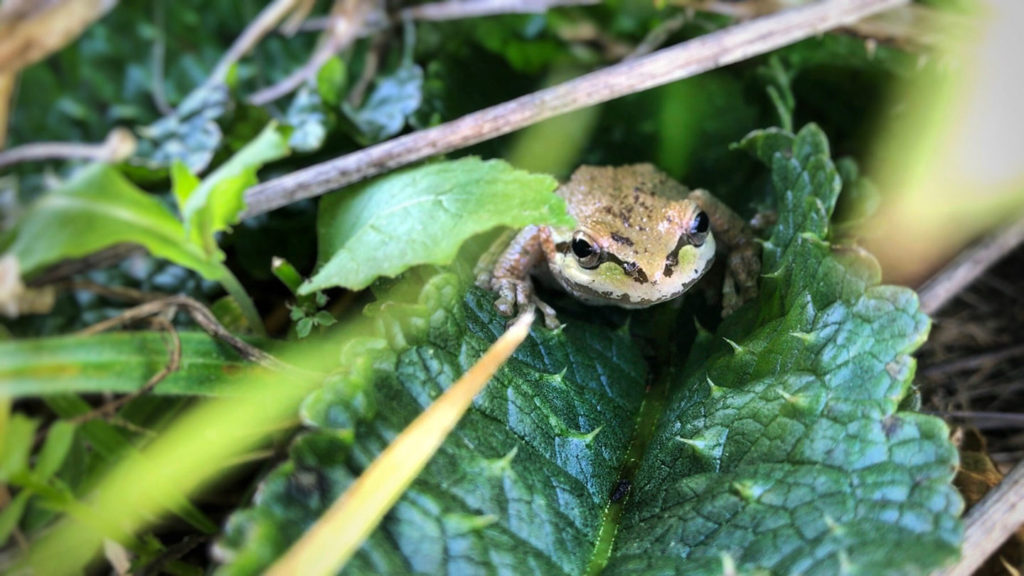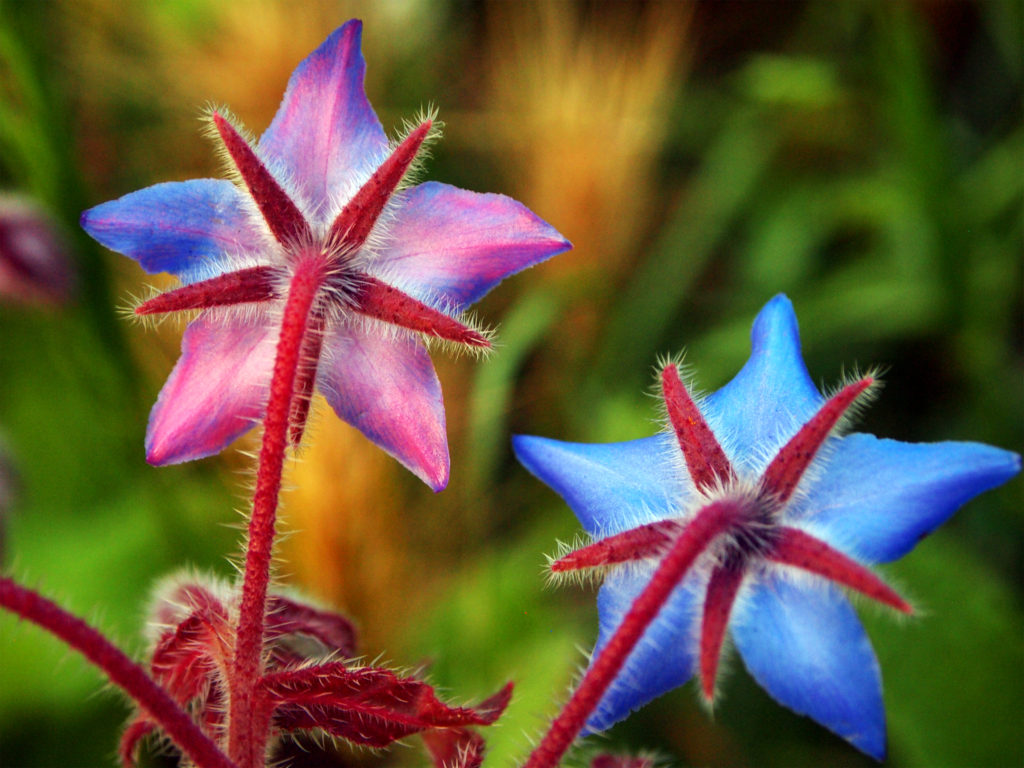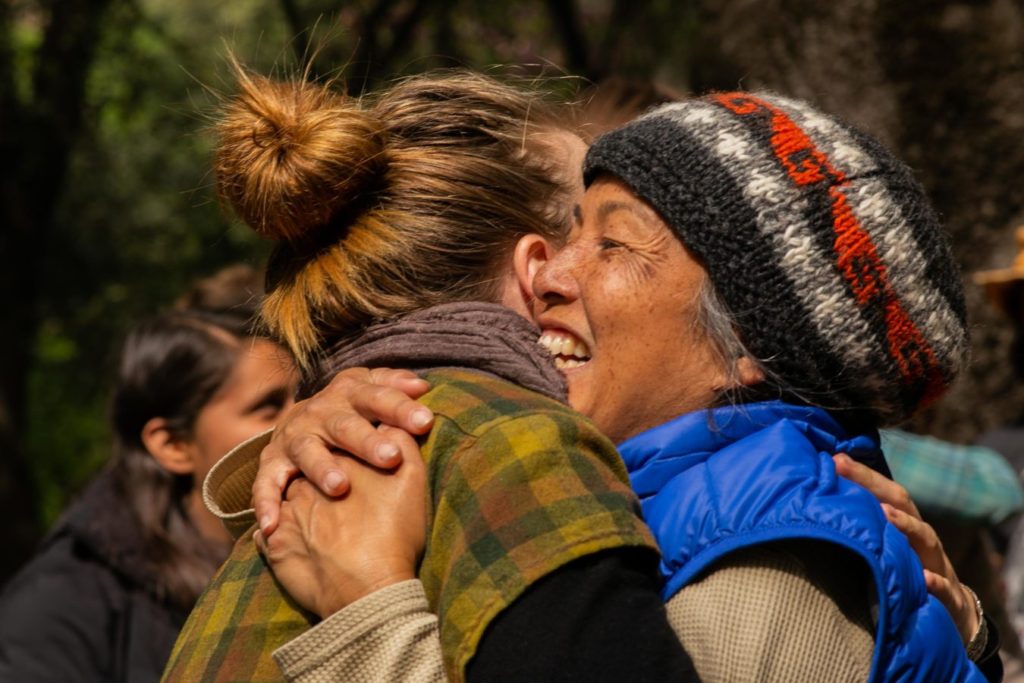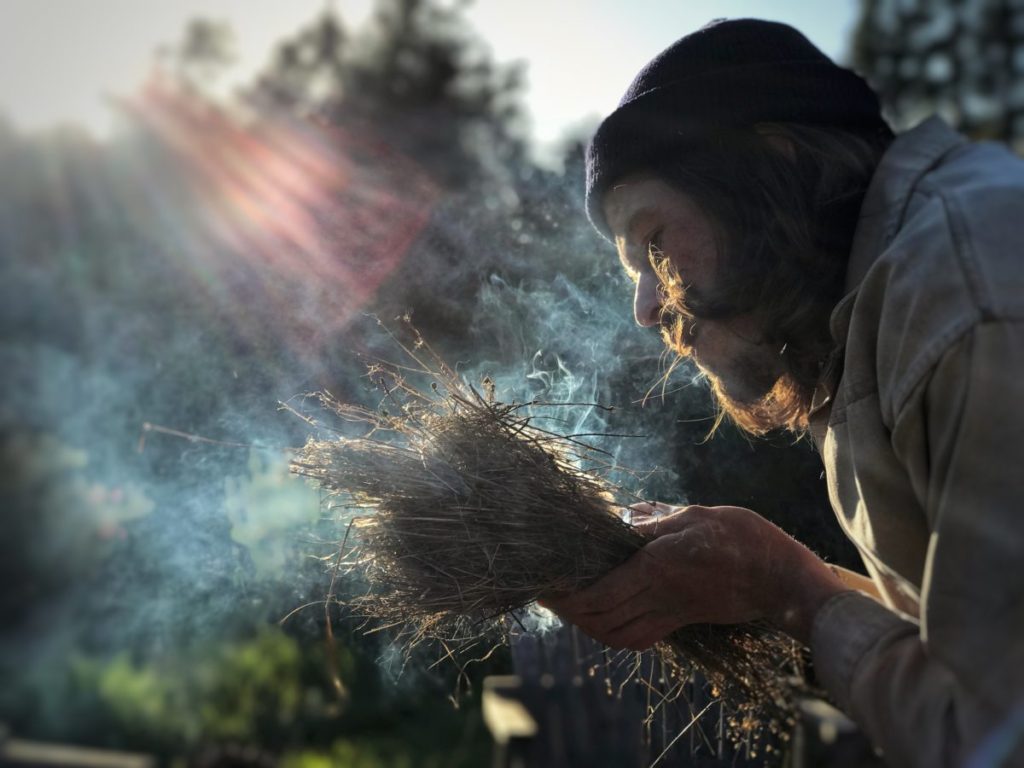
Core Curriculum
Education must critically engage inherited stories of separation and domination, and at the same time responsibly recollect a deeper human inheritance: stories of interrelationship, belonging, dignity and respect. We believe this orientation supports the conditions for much-needed systems change. Please see our page on Relational Education for more context.
We organize our curriculum into four, interrelated areas of study and practice:
earth intimacy
earth intimacy
eco-social co-liberation
co-liberation
embodiment
embodiment
prayerful action
prayerful action
earth intimacy
earth intimacy
eco-social co-liberation
eco-social co-liberation
embodiment
embodiment
prayerful action
prayerful action
earth intimacy
earth intimacy
eco-social co-liberation
eco-social co-liberation
embodiment
embodiment
prayerful action
prayerful action
These four areas are the foundation of all of our programs — whether for youth, teens, or adults — though the specific curriculum we create and use is always tailored to the age, the group, and ideally, the moment itself. Click the feathers above to go directly to a specific section, or feel free to scroll through them all.
EARTH INTIMACY
How well do we know the earth — its cycles and rhythms? How keenly do we perceive seasonal shifts, especially the subtle changes? What relationships do we have with more-than-human beings — the birds, the herbs, the berries, the winds, and other elemental forces that shape a place?
Intimacy is a closeness born of time, attention, humility, care, familiarity…
…and slowness.
Through our earth intimacy practices, we strive for a felt sense of interrelationship with the living planet all around us. These practices encourage a type of closeness through which knowing and caring deeply for another reinforces knowing and caring deeply for oneself. Earth intimacy works to heal the wounds of separation, helping us to remember that we are a part of this earth, not apart from it.
Over time, Earth Intimacy challenges and upends whatever investments we might have in notions of human supremacy: the belief that humans rightfully have dominion over all other life. Instead, we nurture an embodied understanding that we are no better and no worse than other life — only different, with unique contributions to make. What sort of world would emerge if our identities, day-to-day choices, and systemic designs reflected this belief?
CORE PRACTICES INCLUDE
bird language
ecological tracking
& Awareness
ecological design
responsible harvest
earth living skills —
fire, water, shelter, food
wildcrafting —
food, medicine, fiber, vessels
wandering
ecosystem regeneration

ECO-SOCIAL CO-LIBERATION
“Nobody’s free until everybody’s free.”
-Fannie Lou Hamer
At Weaving Earth, we approach our work with a belief that Earth Intimacy is accompanied by a responsibility to understand the intertwined social and ecological history of land and how that history shapes the present.
The United States is not and never has been a land of equal opportunity, despite the version of events that many history textbooks tell. Colonization, white supremacy, cis-heteropatriarchy, and many other forms of dominance are major roots of U.S. society — these roots remain fundamentally unchanged. So while it is true that many things have changed over the generations, these ever-present roots continue to shape the nature of what grows and flourishes in this society. The “land of the free” has never been truly free for those who are targets of the systems of dominance at the foundation of this nation.
Eco-social co-Liberation is a multifaceted response to this truth — it is radical in the sense that it is concerned with the roots, with up-rooting what is sick, and with seeding the soil anew for the sake of fundamentally different outcomes. It is liberatory action in both environmental and social ecosystems, because repair of human relations and repair of ecosystems are fundamentally intertwined — humans are a part of the ecological whole, not apart from it. It is action that moves from a place of understanding the interconnectedness of life on this planet.
We cannot heal ourselves without healing the earth, and we cannot heal the earth without healing ourselves. We must unravel notions of human body supremacy that manifest as cis-heteronormativity, patriarchy, white supremacist racism, extractivism and unchecked consumption in order to liberate our home (eco) and ourselves (social) from systemic oppression and destruction. This is liberation as earthling relational praxis.
Cultivating an authentic relationship with place in this context requires that we address the collective wounds caused by these legacies. As we educate for action to care for the planet, we must also educate for action to fundamentally change the social systems that shape our lives and the opportunities that accrue to some but not others. What values and cultural mechanisms would be in place to support this flourishing?
Recognizing the interdependence of all peoples and all freedom struggles, eco-social co-liberation propels the understanding that every person has distinct work to do on behalf of the whole, based on how protected they are within the social hierarchy they live in. Those who are more protected have a responsibility to get involved, to act, and to follow the leadership and wisdom of those who are less protected. Why would a protected person take action? Because eco-social co-liberation asserts that liberation is essential and beneficial to the oppressor, too. The priority is the power and resilience of the system as a whole.
Systems of dominance are not new or unique to the United States. As we work to disorganize the way that they are manifest here, we are also asking broader questions:
Are human beings capable of living in communities and societies that are beyond dominance?
If so, what values and cultural mechanisms would be in place to support their flourishing?
CORE PRACTICES INCLUDE
reparations
naming & honoring
lineage
Consent practices
equity time
& rest
critical analysis of bias,
discrimination,
& systemic oppression
caucus spaces
new economy
Queer ecology
ancestral research
& storytelling
peacemaking practices
navigating relationships
across difference
conflict resolution

EMBODIMENT
Co-Liberation requires the participation of individual bodies within collective action. Every individual body is a complex system — a dynamic network of relationships between cells, organs, bones, tissues, muscles, senses, and memories. Home begins in the body. The body is the point of origin through which we all navigate the world, and the variety of physical experiences we each have are an ever-present influence on our lives.
Our bodies are the earth in human form.
Our bodies are also deeply mysterious! They don’t come with operating manuals, and despite the inevitable intimacy of these physical forms, some of us may feel like strangers within ourselves at times — perhaps even most of the time. Embodiment practices are an invitation to inhabit ourselves more fully by learning how our systems adapt, communicate, and respond to the world around us. The experience we gain by doing so helps us to make body-based decisions and build capacity to face the hardships of the human experience.
When skills, practices, ideas, and feelings become embodied, we imagine they are rooted deeply, like perennial grasses, who send taproots dozens of feet into the body of the earth.
We study how to regulate our nervous systems; how to track patterns of behavior and thought; how to listen for and receive what we need in any given moment, and also for what may be moving through us. We believe that attuning to our bodies and coming to know their intelligence also helps us to offer more space, presence, and resilience to the body beyond — our communities.
Our bodies are always in relationship to the world around us. We return time and again to orienting questions that help us to locate and understand our bodies within this web of relationships: Where is my body making contact with the earth? How is my body impacting and/or being impacted in different spaces I move through?
Ultimately, through a somatic orientation, we locate ourselves as deeply embedded, precious, and critical bodies of the Earth within the larger web of life.
CORE PRACTICES INCLUDE
SOMATIC AWARENESS
STORYTELLING
IMPROVISATION
COUNCIL
DEEP SENSORY AWARENESS
& EXPANSION
NERVOUS SYSTEM REGULATION
& RESOURCING
DEEP LISTENING
& WITNESSING
ATTUNING TO BODY WISDOM
HONORING & ACKNOWLEDGING
TRANSITIONS & THRESHOLDS
ACTIVATING PERSONAL GIFTS
TRACKING & RELEASING
PERSONAL OBSTACLES & BLOCKS
UNDERSTANDING THE SELF
WITHIN THE CONTEXT
OF SOCIAL CONDITIONING
UNDERSTANDING SELF
WITHIN THE CONTEXT
OF NATURAL CYCLES

PRAYERFUL ACTION
Transformations large and small can occur when we take our prayers and live them through action. We define “prayerful” as filled with reverence, humility, and appreciation for the bigger story — known and unknown. Prayerful action affirms that the changes we seek necessitate our participation through sustained, daily work, which includes rest and play!
This “work” is sourced from our connection to creativity, which is the wellspring of the imagination. When we open a channel for imagination to move through us, unhindered, emergent solutions and innovations are born. This is key to solving today’s problems with different frameworks than the ones that generated them.
This is, of course, easier said than done. It is far too easy (and often tempting) to feel that the world is broken beyond repair. Thus, prayerful action also invites us to befriend our joy and gratitude as an act of resistance against fatalism and the life-negating systems that are prevalent right now. Joy and gratitude are an act of presence and aliveness that helps us to recognize that the world is recreating itself in each moment. Our participation can have unimaginably powerful impacts.
Finally, prayerful action is the synthesis of our educational pillars — Earth Intimacy, Co-Liberation, and Embodiment — into a type of leadership that is best described as service. Today’s world requires service-oriented leadership that is born out of the maturation of the human spirit. This leadership must be guided by an understanding of the inherent connections we have to communities and systems that go far beyond ourselves. It is enhanced by creative collaboration, deeply aware of historical and present-day patterns of oppression, and considerate of the health and well-being of many generations to come. Community resilience emerges when leadership is sourced out of respect for the whole.
CORE PRACTICES INCLUDE
cultivating forgiveness
& adaptability
generating vision
& strong intention
in your life
understanding the role
of ceremony in
individual & community
health
honoring transitions
peacemaking practices
storytelling
& improv
music
& song creation
practice of gratitude
deep sensory awareness
& expansion


